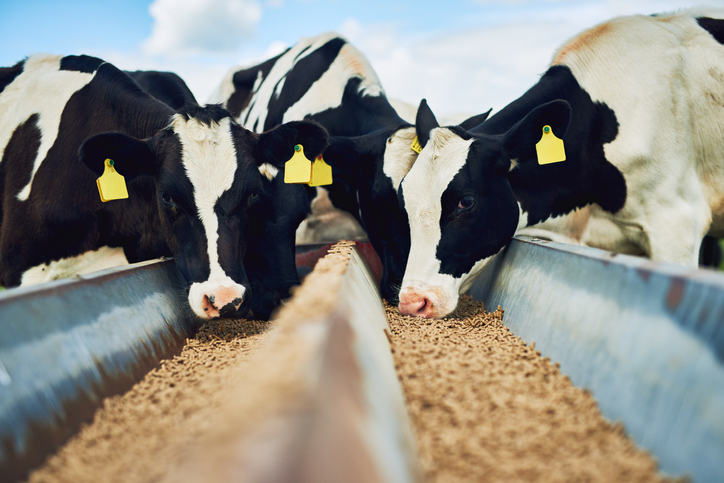Why does Environmental Defense Fund work with dairy companies?
By Katie Anderson, Senior Director, EDF+Business, Food & Forests, and Vrashabh Kapate, Manager, Dairy Industry, EDF+Business, Food & Forests
Here at Environmental Defense Fund, a key part of our strategy includes working with businesses to create game-changing solutions for business and the planet.
We’ve shared our science, policy, and economic expertise with 1 in 3 Fortune 500 companies to find win-win strategies, including working with Amazon and FedEx to electrify their fleets, Sephora and Ulta to take toxins out of beauty products, and Walmart to improve their supply chain and manufacturing to cut a gigaton of waste and pollution.
Now, we’re working with the dairy sector to drastically reduce supply chain emissions, with a particular focus on methane, an especially potent greenhouse gas.

Why the dairy industry?
We follow the emissions. The food system accounts for about one-third of global climate pollution. Our client and priority is the planet, therefore we have to work with major food companies to drive down climate emissions and secure our food future.
In particular, agriculture accounts for around 40% of methane emissions caused by humans worldwide. Livestock farming contributes the majority of these emissions, and dairy production from cattle, which accounts for approximately 8% of total human-caused methane emissions, is a significant source–specifically from cow burps and cow manure.
Methane has more than 80 times the warming power of carbon dioxide over the first 20 years after it reaches the atmosphere, so reducing methane emissions from livestock farming is one of the fastest ways to slow global warming in the near term.
Of course, cows and dairy farms provide food and livelihoods for billions of people around the globe. Milk, yogurt, and cheese are key sources of nutrition and cultural staples for families worldwide–including our own families. We need urgent action to reduce dairy farming’s climate impact, while also equipping farmers with solutions that can keep their farms productive on a hotter planet.
What can that action look like? It can look like our partnership with Danone, announced earlier this year, in which Danone is pursuing a public target to reduce methane in its fresh milk supply by 30% by 2030. In our work with Danone, we’re working together on improved science, data and reporting standards, innovative financing models to help farmers of all sizes, and catalyzing industry and policy leadership through advocacy.
Many food and agriculture companies deserve credit for taking great strides on climate in recent years. But more action on methane is needed now. Solutions exist today, and we’re working with the global dairy industry on scaling more ambitious action because of the urgency of the climate crisis.
For our planet, our farms and a vital Earth, the dairy industry has a key role to play and must take ambitious action on methane today.










